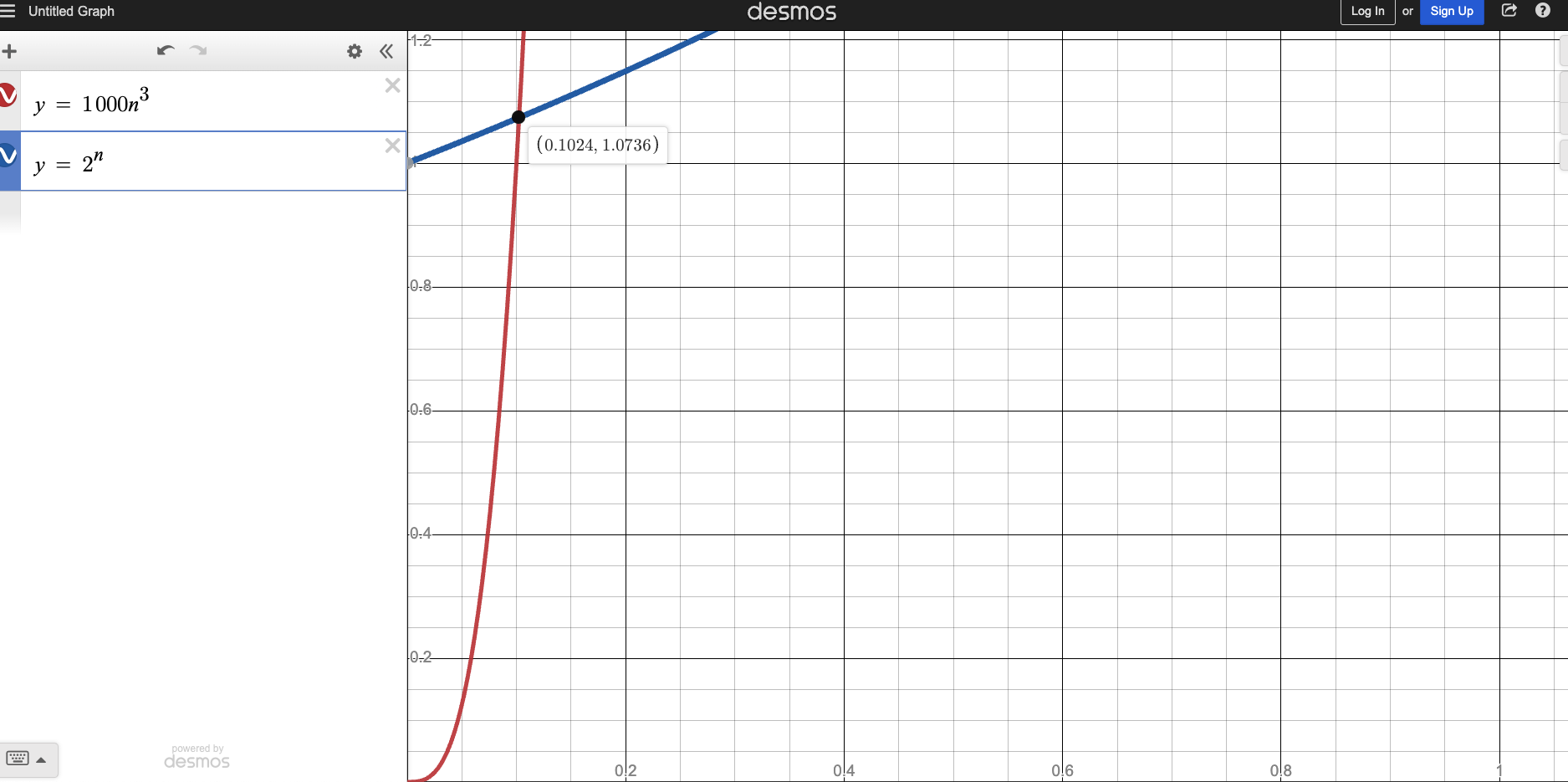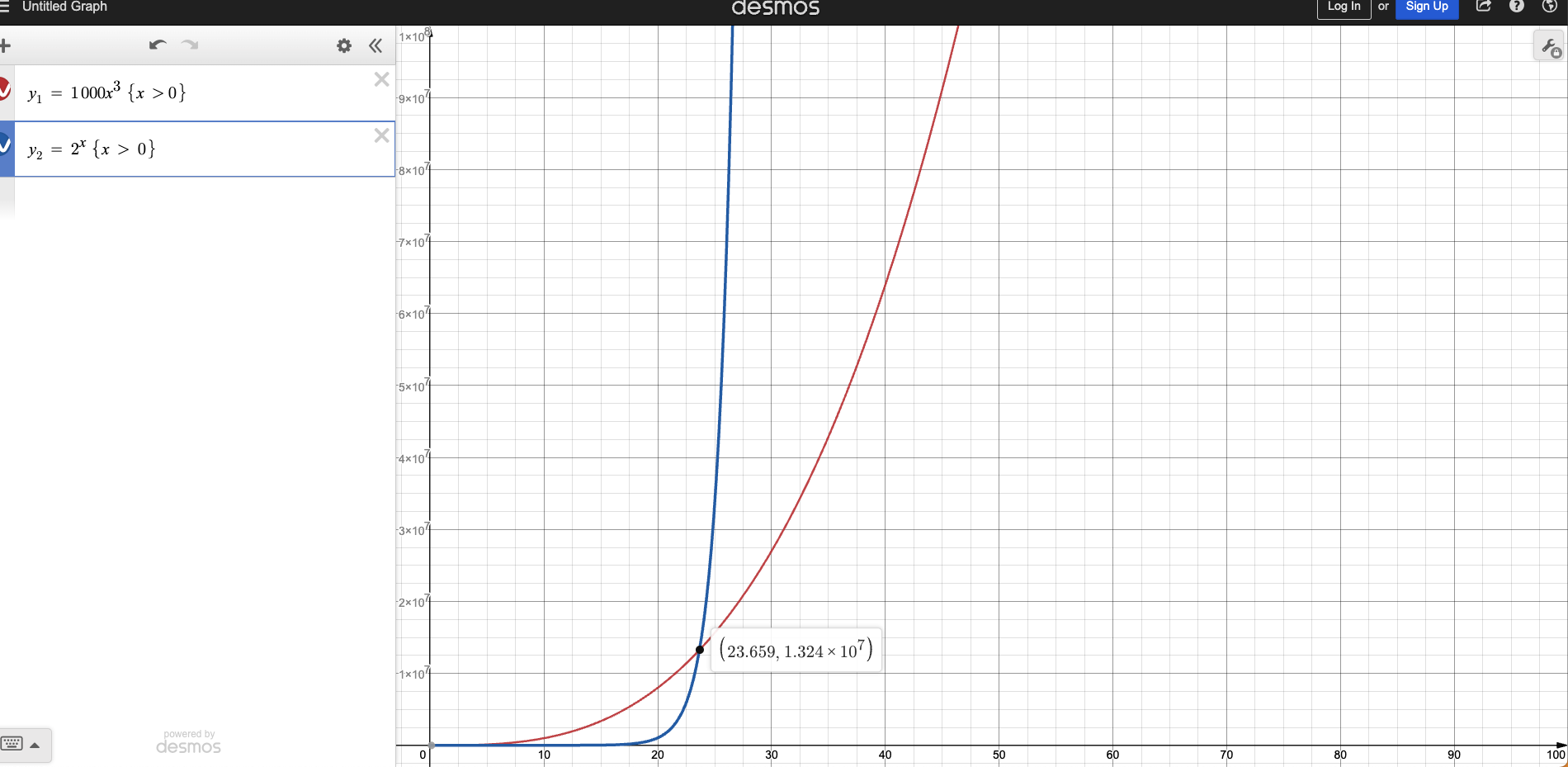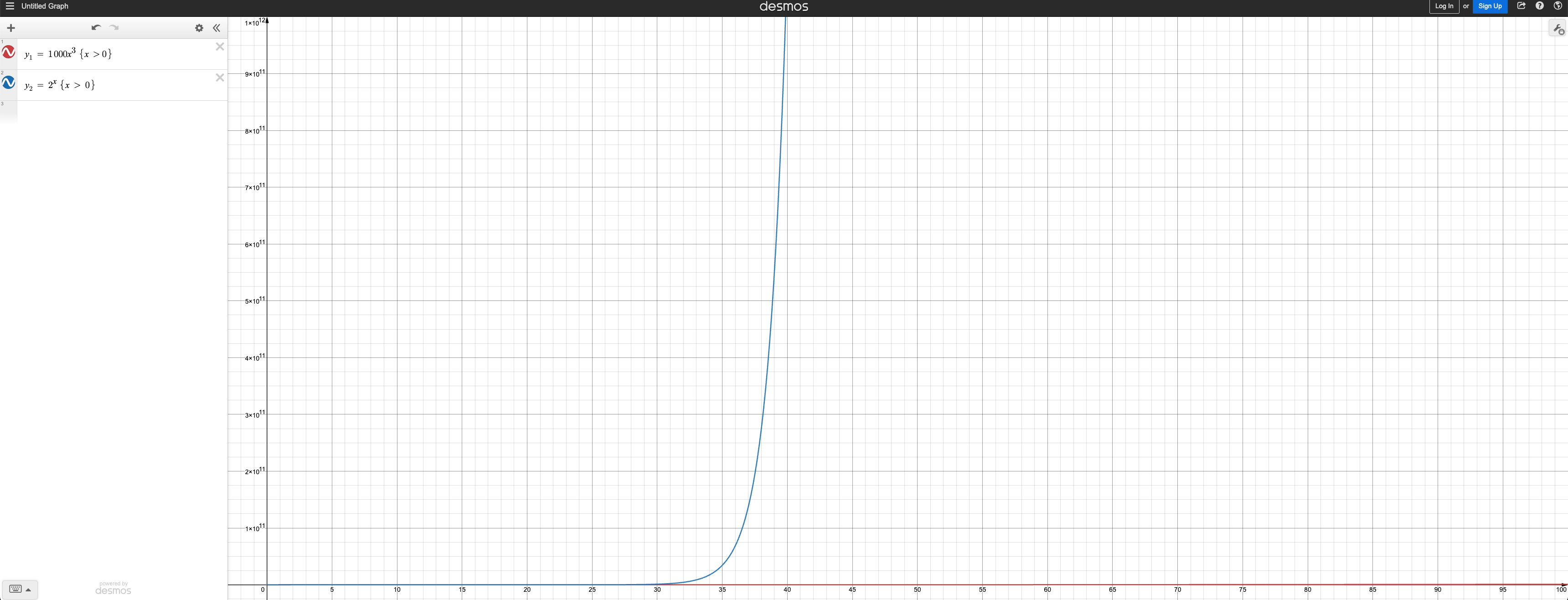DA2. Algorithm Analysis
Statement
For the following problems, develop your answers and post your answers to the discussion forum.
Asymptotic analysis is a difficult concept to master as such we will all benefit by understanding each other’s perspectives.
Problem 1
Suppose that algorithm A takes \(1000n^3\) steps and algorithm B takes \(2^n\) steps for a problem of size n. For what size of the problem is algorithm A faster than B (meaning algorithm A has fewer steps than B)?
In your answer describe not only what the answer is but how you arrived at the answer.
Answer 1
The plan is to sketch the two functions and find the point where A is faster than B (A graph is below B graph).
In the sketch below, the X axis is the input size and the Y axis is the number of steps.
The red line is the A = 1000n^3 function and the blue line is the B = 2^n function.
The two graphs intersect at two points: (0.1, 1.07) and (24.6, 1.0324 * 10^7)
We will study the graph in 3 different parts:
Part 1: n between 0 and 1
Part 2: n between 1 and 24
Part 3: n > 24
Part 1 - n between 0 and 1
B = 2^n (blue line) is above A = 1000n^3 (red line) for all values of n between 0 and 1.
No input size of n is between 0 and 1, so we ignore this part.
Part 2 - n between 1 and 24
B = 2^n (blue line) is above A = 1000n^3 (red line) for all values of n between 1 and 24.
We conclude that B = 2^n is always faster than A = 1000n^3 for all values of n between 1 and 24.
Part 3 - n > 24
B = 2^n (blue line) is above A = 1000n^3 (red line) for all values of n greater than 24.
The difference between the two graphs is super huge once n exceeds 30.
Conclusion
We saw that B = 2^n is faster than A = 1000n^3 for all values of n between 1 and 24.
But we also saw that B = 2^n is faster than A = 1000n^3 for all values of n greater than 24.
Because the domain n > 24 is much more significant than the domain n between 1 and 24, we can conclude that A = 1000n^3 is faster (in genral) than B = 2^n.
Also, we can safely say that factorial growth is always slower than exponential growth .
Problem 2
Give the upper bound (big O notation) that you can for the following code fragment, as a function of the initial value of n.
for ( int i = 0 ; i < n ; i ++ ) {
for ( int j = 0 ; j < i ; j ++ ){
//do swap stuff, constant time
}
}
Do you think that the lower bound is likely to be the same as the answer you gave for the upper bound?
In your response state why or why not.
Answer 2
Looking at the nested for loops, we can see:
The outer loop runs \(n\) times
The inner loop runs \(i\) times that is i = 0, 1, 2, …, n-1 which is almost n/2 times (Shaffer, 2011, Example 3.12)
The total cost for this code fragment is \(n \times \frac{1}{2}n = \frac{1}{2}n^2\) .
The Upper bound is \(O(n^2)\) where the constant \(1/2\) is ignored.
The lower bound is also \(O(n^2)\)
Since both the upper and lower bounds are the same, we can represent the time complexity of this code fragment as \(\theta(n^2)\) .
References
April 23, 2023
April 23, 2023


